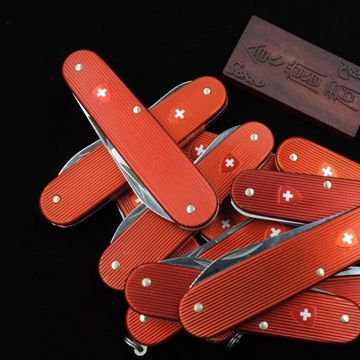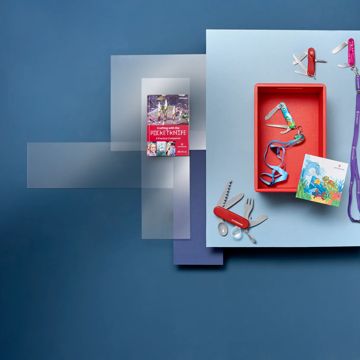From raw steel to a precision instrument – the life of a cutler
Does René Friend's retirement mean the end of the cutler tradition at Victorinox
From lump to legend
It all begins with a raw piece of steel. At first it looks cumbersome and rough. Its appearance reminds us of how it was smelted from the earth, from the ore, and the intense heat it had to endure. And then this lump comes to René. He shapes and hones and shapes and hones. He is the one who brings form to the material and shows what it can do. At the end, two perfect parts lie before him: the blade, sharp and gleaming, and the spring, which makes the blade open and close easily with the legendary Victorinox “click!” Even after 50 years as a cutler, René Frieden’s enthusiasm for his profession is still evident.
He is fascinated by the transformation that takes place in his hands. But what sounds romantic is hard work and requires an enormous trove of knowledge and experience. He is familiar with a wide range of metals and is also an expert in plastics and natural materials like wood, horn, and mother-of-pearl. The knife not only has to cut well, it also needs to fit properly in your hand. In order to process both the blade and handle, René’s arsenal of tools includes emery, grinding, and polishing wheels, as well as stamping tools and presses. In the past, the anvil was also often used. René hammered his parts until they had the right shape. Today a cutler’s work starts with stamped blanks. But the one thing that hasn’t changed is the dedication you need in order to teach your hands how to think.
Mother-of-pearl knife
“I like mother-of-pearl because it is pleasantly cool to the touch and completely scratchproof,” says René. In any event, he appreciates dealing with a lot of natural materials in his profession. “Nature is perfect as it is,” the smith says enthusiastically. Mother-of-pearl is a good example of this. Sea snails build their shells in layers like a brick wall. This makes the material extremely robust. This layering also produces a shimmering effect. René always has a small mother-of-pearl knife on his key chain.
Soldier’s knife
In 2009, Victorinox resurrected the first Swiss Army soldier’s knife of 1891. This is a perfect example of why the company still needs a cutler, even today. The engineers working on the project were stumped by the fact that the edges of the scales were rounded, but the rivet holding the knife together was rounded only in one place. How was it possible to make sure the rounded side of the rivet was in the correct position? René grins: “Quite simple, a small tube on the 100 model.”
Deer antler knife
Knives are subjected to high pressure. In the past, it was common to have knife handles made of deer antler, as it effectively dampens pressure and blows. The material also feels nice in the hand. Even today, deer antler knives are very popular with collectors. Even though Victorinox no longer manufactures such knifes, we are experts when it comes to repairing old deer antler knives. People from all over the world send us their knives to be fixed, including the knife pictured here, which is from South Korea.
The preservation of a species
Today in Switzerland there are still between 20 and 30 federally certified cutlers, both men and women. But what was once a highly esteemed profession is now in danger of extinction. At Victorinox, it will also be important in the future for the company to have good generalists, individuals with comprehensive knowledge who have an understanding of the larger picture. „“For precisely this reason, we are going to start training a new cutler this year,” says Toni Blaser, who is responsible for apprenticeship training.
Would you like to accompany our young smith during his or her apprenticeship to become a cutler? Then follow his or her career on our Facebook and Instagram pages.
What is René Frieden’s favorite knife?
What does the master craftsman reach for when he needs a knife? René’s favorite knife might come as a surprise. Perhaps you expected a knife with a mammoth bone handle or silver blade. But a true artisan prefers a simple and appropriate knife to something swanky or exclusive. Therefore his knife of choice is the classic pocket knife. “It can do everything, fits well in your hand, and it’s always with you.”
Everything you need to know about the Swiss Army Knife
Official Store
All available products and the best shopping experience in one place
Free Shipping
For orders over £50 and free returns
Secure
Payment and personal data







